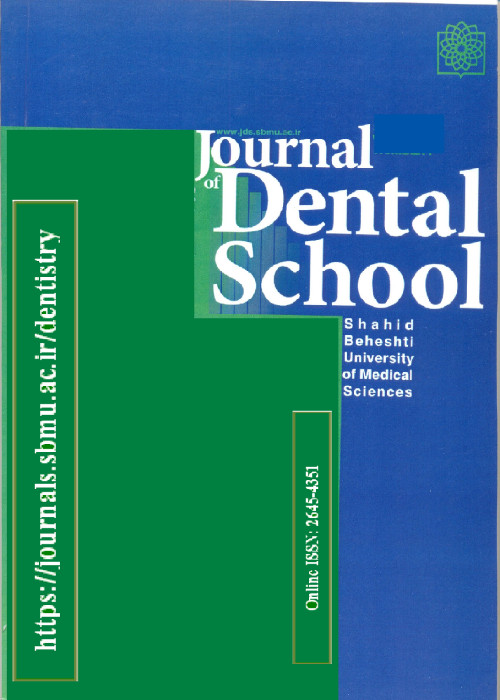In Vitro Antimicrobial Activity of Propolis in Comparison with Calcium Hydroxide against Enterococcus Faecalis
Author(s):
Abstract:
Background And Aim
Propolis, a natural product of the honeybee, is currently used as an anti-inflammatory and antimicrobial agent. Using different antibacterial agents is an important step to reduce the number of microorganisms within the root canal and improve the endodontic treatment prognosis. The present in vitro study investigated the antibacterial efficacy of Propolis against Enterococcus faecalis compared to calcium hydroxide. Materials and Methods
In this experimental study, 42 single-rooted human teeth were selected and their smear layer was completely removed after access cavity and canal preparation. After infecting the prepared canals with Enterococcus faecalis species, negative control group was used during sterilization period and in two groups of 18 each, canals were filled with 30%propolis extract and calcium hydroxide, respectively. No material was added to the positive control group. The specimens were stored in CO2 incubator for 72 hours, 1 week and 1 month and afterwards, samples were taken from inside the canals and Enterococcus faecalis colonies were counted. Number of colonies at different time intervals was statistically analyzed using Kruskal-Wallis test. Mann-Whitney U test was used to compare the number of colonies after using the understudy medicaments. Results
Number of colonies was 55,000±46,368.09 and 43,333.33±48,027.077 after incubation for 72 hours and using 30% Propolis extract and calcium hydroxide, respectively. After 1 week incubation, number of colonies was 166.67±408.25 in the Propolis group and zero in the calcium hydroxide group. No colonies were observed after 1 month incubation in both groups. No significant differences were noted between two medicaments at different time intervals. Conclusion
In general, antimicrobial activity of Propolis against Enterococcus faecalis species was comparable with that of calcium hydroxide at different time intervals. Therefore, it can be used as an alternative natural material for disinfection of canals during endodontic treatment.Language:
Persian
Published:
Journal of Dental School, Volume:30 Issue: 1, 2012
Page:
9
magiran.com/p963769
دانلود و مطالعه متن این مقاله با یکی از روشهای زیر امکان پذیر است:
اشتراک شخصی
با عضویت و پرداخت آنلاین حق اشتراک یکساله به مبلغ 1,390,000ريال میتوانید 70 عنوان مطلب دانلود کنید!
اشتراک سازمانی
به کتابخانه دانشگاه یا محل کار خود پیشنهاد کنید تا اشتراک سازمانی این پایگاه را برای دسترسی نامحدود همه کاربران به متن مطالب تهیه نمایند!
توجه!
- حق عضویت دریافتی صرف حمایت از نشریات عضو و نگهداری، تکمیل و توسعه مگیران میشود.
- پرداخت حق اشتراک و دانلود مقالات اجازه بازنشر آن در سایر رسانههای چاپی و دیجیتال را به کاربر نمیدهد.
In order to view content subscription is required
Personal subscription
Subscribe magiran.com for 70 € euros via PayPal and download 70 articles during a year.
Organization subscription
Please contact us to subscribe your university or library for unlimited access!


